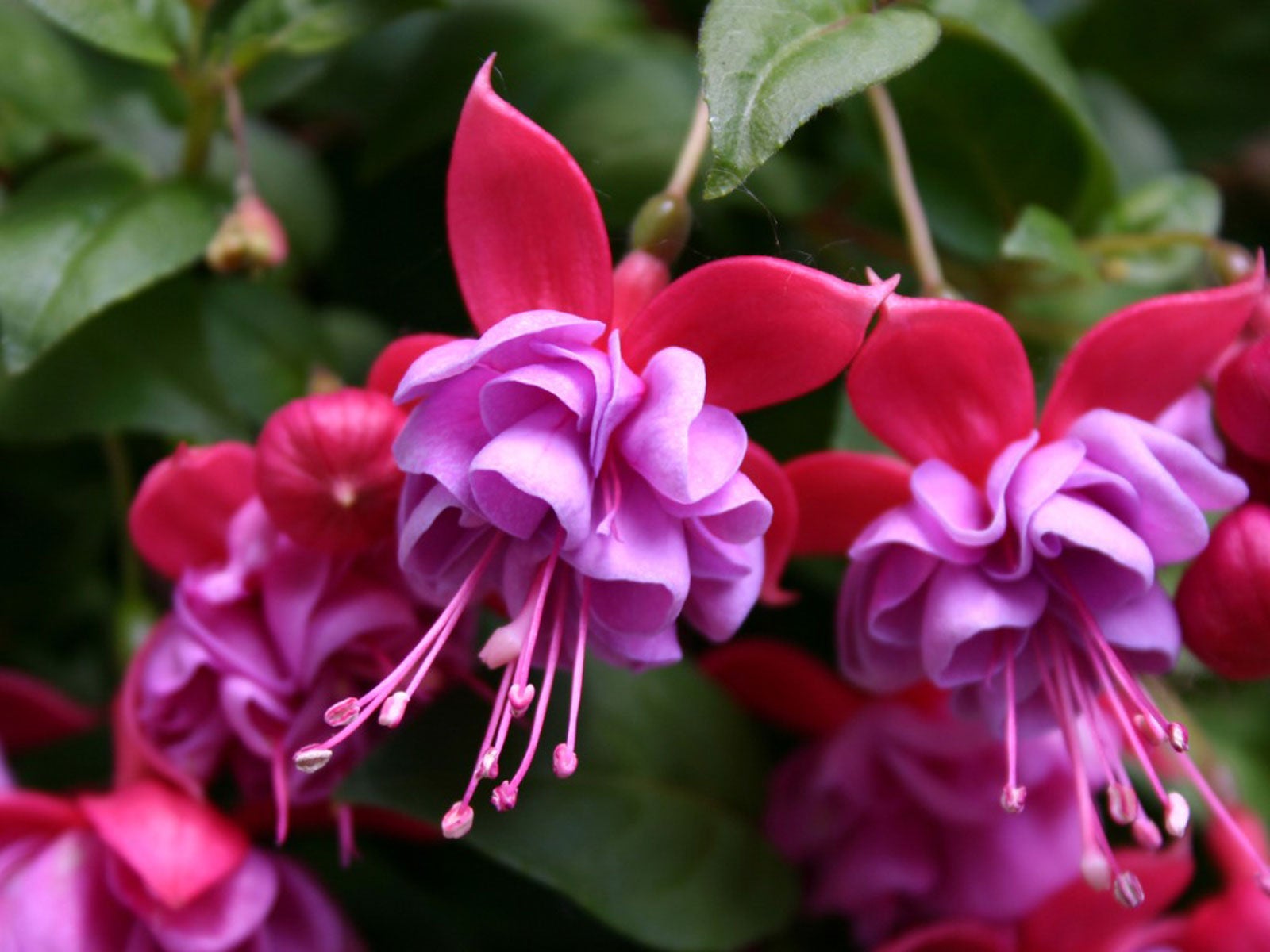What Is Hybrid Fuchsia – Information About Hybrid Fuchsia Care


Most have heard of fuchsia flowers before, but what is a hybrid fuchsia? Read on for more information and find out how growing one or more can brighten up your garden.
Hybrid Fuchsia Information
Hybrid fuchsia plants (Fuchsia x hybrida) are created when several different species of the plant have been crossed – Fuchsia magellaniaca x Fuchsia coccinea x Fuchsia fulgens x Fuchsia arborescens. These crosses produce certain desired traits within the plants. Some of these preferences include tolerance to cold or a specific growth habit.
Hybrid fuchsia plants are more tolerant to cooler summer conditions and thrive in partial shade. This makes them an excellent choice for many northern gardeners or anyone wanting to brighten up a dark, shady area.
There are three main types of fuchsia hybrids: upright, prostrate, and trailing. Upright fuchsia plants are ideal for containers or plant a few of them in the garden to create an attractive, informal hedge. Prostrate and trailing varieties used in hanging baskets or growing up a trellis may serve as a stunning garden focal point. Regardless of the cultivar, hybrid fuchsia will set a profusion of bright pink-purple flowers, which are especially attractive to hummingbirds.
Plants are prized for their long bloom season from early summer through the first fall frost.
Types of Hybrid Fuchsias
While there are numerous types of hybrid fuchsias to choose from, here are some common ones that make great additions:
- ‘Blaze’ – produces flowers with bright red sepals and vibrant pink petals.
- ‘Comet’ – shrub form that produces pendant flowers with white sepals and pink to soft pink clustered petals.
- ‘Colossus’ – bushy plant producing large pendant flowers with bright red sepals and dark purple petals.
- ‘Flash’ – produces light green leaves and bushy growth habit. Flowers are magenta and red.
- ‘Ice Maiden’ – upright, double flowering type with white sepals and pale mauve petals.
- ‘Mendocino Rose’ – semi-double flower with white sepals and purplish petals.
- ‘Orange Drops’ – bushy to semi-trailing light to dark orange flowers.
- ‘Rosebud’ – semi-double flower with bright pink sepals and deep mauve petals.
- ‘Strawberry Delight’ – small plant producing double pale pink flowers with ascending sepals and ruffled petals.
- ‘Tom Thumb’ – produces arching open habit and small single tubed flowers with purple-white petals and red sepals.
Hybrid Fuchsia Care
Since these fuchsias are hybrid, they will not grow true-to-type from seed, so you’ll have to start with a nursery grown plant. When planting hybrid fuchsias into the garden, choose a well-draining location or container. Fuchsia is tolerant of shade and will benefit from this during the hottest parts of the afternoon.
Sign up for the Gardening Know How newsletter today and receive a free copy of our e-book "How to Grow Delicious Tomatoes".
Beyond planting, hybrid fuchsia care will be minimal throughout the growing season. Frequent irrigation will be a necessity, especially if planted in containers or hanging baskets. Flowering may briefly cease during the hottest portions of the season but should resume when temperatures cool. Frequent deadheading will help to promote new blooms.
Hybrid fuchsia plants will not survive winter in most growing regions. Overwintering fuchsia plants indoors is an option, though they can be difficult to maintain as a houseplant. Many growers suggest taking stem cuttings of fuchsia plants to grow indoors or storing the containers in a cool, minimally heated space that does not receive freezing temperatures. Regardless of the method, the additional hybrid fuchsia care can ensure beauty in the garden for many years to come.

Tonya Barnett has been gardening for 13 years. Flowers are her passion. She has transformed her backyard into a cut flower garden, which she regularly chronicles on her YouTube channel http://www.youtube.com/@tonyawiththeflowers.